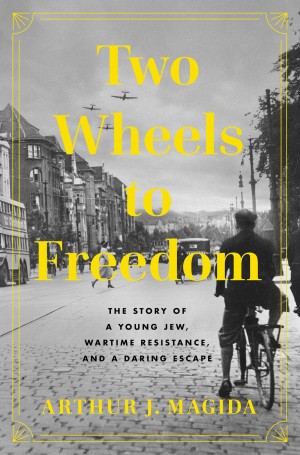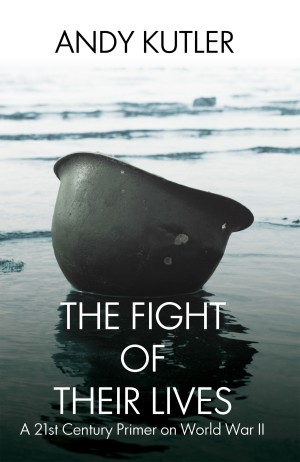The lives of three boys — Elmer Hovland, a farm boy from Minnesota; Sammy de Cola, a tough kid from Boston; and Eddie Willner, son of a middle-class, close-knit Jewish family in Germany — cross paths in war-torn Europe in 1944. In this work of nonfiction, Nina Willner — Eddie’s daughter — presents a unique and powerful view of World War II. The boys’ unlikely, almost magical predawn meeting in an isolated forest will undoubtedly bring tears to all but the most hard-hearted readers. In this timely history, Willner shows in unsentimental prose how “one of the world’s most accomplished and culturally advanced societies … spiraled into an Orwellian dictatorship.” At the same time, she writes with warmth and intimacy about her father and the American soldiers who rescued him.
The book opens when Elmer, Sammy, and Eddie are young boys, enjoying very different lives with their families and friends. Life takes a dramatic turn for them all with the start of the war. Like many in their bourgeois Jewish neighborhood of Cologne, the Willners initially think they can weather the storm, but after Kristallnacht, Eddie’s family is forced to flee Germany for France where they are sheltered in a small village. When the United States enters the war, Elmer and Sammy are among the tens of thousands of young men who enlist in the military. The two end up together in Company D of the 32nd Armored Regiment. Elmer, a skilled mechanic, is appointed an officer and Sammy, now with the wartime moniker of “Pepsi,” a cook. They sail to Europe to prepare for the Normandy invasion.
When the Nazis invade France, Eddie and his parents are betrayed and sent to Auschwitz. His mother perishes, and he and his father, “the lucky ones,” are deloused, tattooed (along with the then fifteen-year-old Elie Wiesel), and sent to the Blechhammer labor camp, where coal is turned into liquid fuel. Blechhamer’s fuel production sites are so crucial that they become the number one target of Allied precision bombing raids in the summer of 1944. Although prisoners face the risk of death in the raids, they are happy about them because the raids prove they have not been forgotten. As the raids continue, some prisoners, including Eddie and his friend Mike, a Dutch orphan, take advantage of the chaos to sabotage the plants, severing telephone wires, shredding rubber treads, and puncturing storage tanks.
Eddie’s father, a World War I veteran decorated with the Iron Cross for heroism, raised his often mischievous son with unwavering discipline. He also made him memorize the names of two dozen family members so he could find them after the war. Eddie is devastated when his father dies of starvation, but remembers his father’s lessons and is determined to survive at all costs. He and Mike cling to each other through each descent into the hell of Nazi camps. Their final assignment is to the Langestein camp, deep in the tunnels of the Hartz Mountains. Inmates labored under such harsh conditions that a farmer, casually smoking a clay pipe, made a daily trip hauling the dead on his cart to the crematorium, until the crematorium broke down from overuse.
On the battlefield, Elmer and Pepsi face their own challenges. They survive both the Normandy landing and the assault of the Siegfried Line, where many of their comrades die. Though they develop military skills, “fear never left them.”
Against all odds, Eddie and Mike escape and wander, starving and wasted, through the German countryside. When they spy an Allied Sherman tank, they are overjoyed. The soldiers of Company D see two teenagers, “withered to skeletons, barely clinging to life but with huge smiles on their parched blue faces” and finally understand what they have been fighting for.
This moving story of friendship and solidarity — and ultimately survival — is a must-read. Especially today.
Elaine Elinson is coauthor of the award-winning Wherever There’s a Fight: How Runaway Slaves, Suffragists, Immigrants, Strikers, and Poets Shaped Civil Liberties in California.





